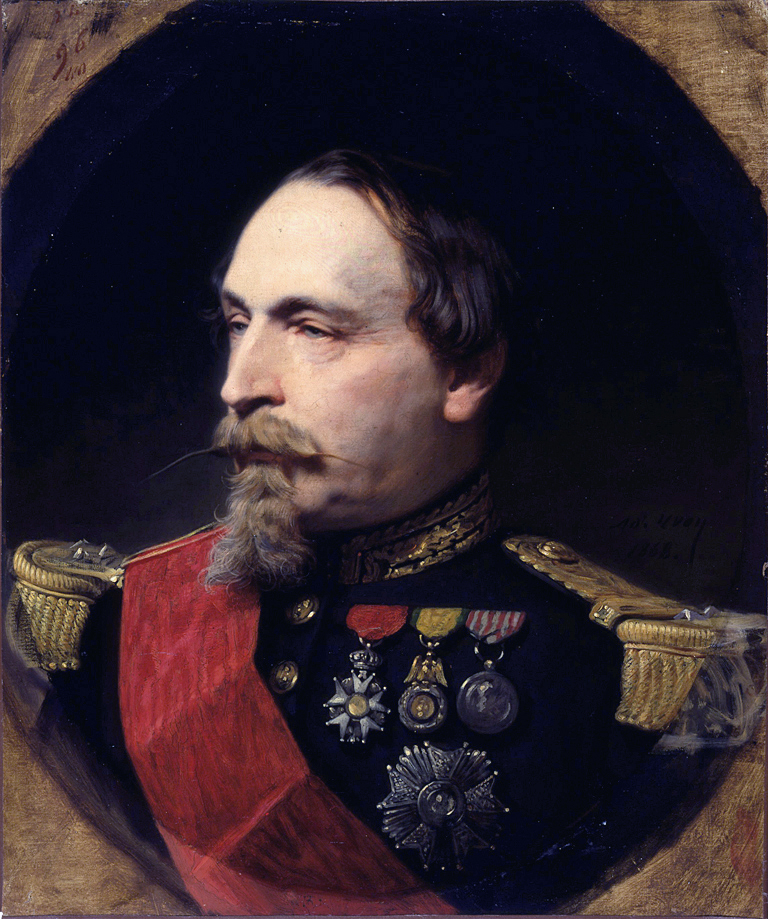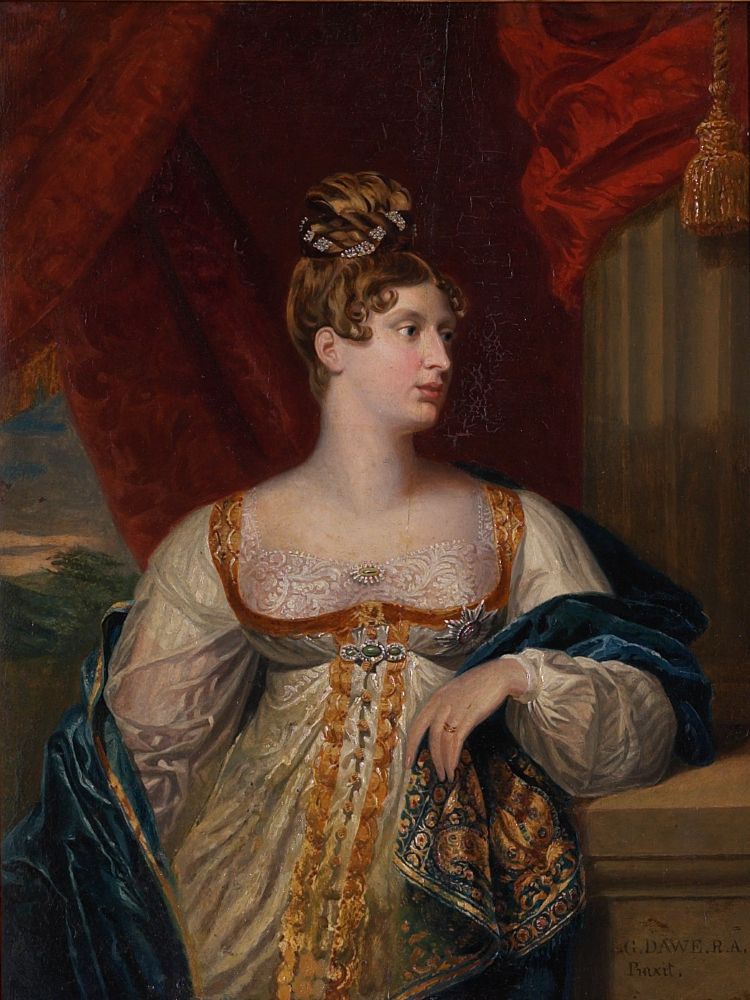© Unofficial Royalty 2025

Napoleon III, Emperor of the French; Credit – Wikipedia
January 9, 1500 – Birth of Diane de Poitiers, mistress of King Henri II of France, at the Château de Saint-Vallier in the Auvergne-Rhône-Alpes region of France
Diane de Poitiers was the royal mistress of King Henri II of France from around 1534 until Henri died in 1559. It was through her presence at court as a lady-in-waiting to Queen Claude of France (mother of Henri II) that she became known to the young Prince Henri. Eighteen years older than Henri, she made quite an impression on him. Despite his marriage to Catherine de’ Medici, Diane’s second cousin, Henri was smitten with Diane. For the next 25 years, Diane de Poitiers would be Henri’s closest companion, and many felt she was the most powerful woman in France at the time. Her influence on Henri was without match, and he relied heavily on her advice in all official decisions. Such was her position that when foreign royals and leaders would send gifts to Catherine de Medici, they would also send gifts for Diane. Diane’s influence and power would completely halt in 1559 after King Henri II died from injuries received in a jousting tournament. The widowed Catherine de’ Medici quickly removed Diane from the existence she had enjoyed for so many years.
Unofficial Royalty: Diane de Poitiers, mistress of King Henri II of France
January 9, 1514 – Death of Anne, Duchess of Brittany, Queen of France, wife of King Charles VIII of France and second wife of King Louis XII of France, at the Royal Château de Blois in Blois, France; buried at the Basilica of Saint-Denis near Paris
Anne, Duchess of Brittany in her own right, is the only woman to have been Queen Consort of France twice. She was the wife of King Charles VIII and the second of the three wives of King Louis XII. Anne was the daughter of François II, Duke of Brittany. When her father in 1488, Anne became the Duchess of Brittany in her own right. In 1491, Anne married King Charles VIII of France. Anne and Charles had seven children but none survived. King Charles VIII died unexpectedly from a head injury in 1498. Because he had no surviving children, Louis, Duke of Orléans succeeded him as King Louis XII of France. Anne returned to Brittany and began taking steps to ensure the independence of her duchy. Louis XII did not want this to happen and he had his 24-year childless marriage to Charles VIII’s sister Jeanne of France annulled and married Anne of Brittany in 1499. They had four stillborn sons and three miscarriages but they did have two daughters who survived to adulthood. After Anne’s death, the 52-year-old King Louis XII, still seeking a son to succeed him, married 18-year-old Mary Tudor, the younger sister of King Henry VIII of England, but Louis XII died three months after the marriage.
Unofficial Royalty: Anne, Duchess of Brittany, Queen of France
January 9, 1819 – Death of Queen Catherina of Württemberg, second wife of King Wilhelm I of Württemberg, born Grand Duchess Ekaterina Pavlovna of Russia, in Stuttgart, Kingdom of Württemberg, now in Baden-Württemberg, Germany; buried at the Württemberg Mausoleum in Rotenberg, Stuttgart
Catherina was the daughter of Paul I, Emperor of All Russia and the sister of Alexander I, Emperor of All Russia, and Nicholas I, Emperor of All Russia. She had a short marriage and two sons with her first cousin Duke Georg of Oldenburg, who died from typhoid fever. She then married the future King Wilhelm I of Württemberg in 1816 and they had two daughters. Despite having a happy marriage, Wilhelm continued his relationships with numerous mistresses, including the Italian Blanche de la Flèche. When Catharina was made aware of this, she drove to Scharnhausen Castle on January 3, 1819, where she found Wilhelm and his mistress together. She quickly returned to Stuttgart and just six days later, 30-year-old Catharina died of complications from pneumonia
Unofficial Royalty: Ekaterina Pavlovna of Russia, Queen of Württemberg
January 9, 1854 – Birth of Lady Randolph Churchill, mistress of King Edward VII of the United Kingdom, born Jennie Jerome in Brooklyn, New York (mother of Sir Winston Churchill)
Jennie Jerome was an American socialite who was the mistress of King Edward VII of the United Kingdom, among others. Through her first marriage to Lord Randolph Spencer-Churchill, a younger son of John Winston Spencer-Churchill, 7th Duke of Marlborough, she was the mother of Prime Minister Winston Churchill. The Spencer-Churchills opposed the marriage, but after a dowry offer of $250,000 (several million dollars today), they quickly agreed to the marriage. Jennie is also reported to have had affairs with King Milan I of Serbia, Prince Karl Kinsky, and Herbert von Bismarck. She married two more times after the death of her first husband.
Unofficial Royalty: Lady Randolph Churchill, mistress of King Edward VII of the United Kingdom
January 9, 1873 – Death of Louis-Napoléon Bonaparte, Emperor Napoleon III of the French, in exile at Camden Place (now Chislehurst Golf Club) in Chislehurst, England; buried at Saint Michael’s Abbey in Farnborough, Hampshire, England
Louis-Napoléon Bonaparte, later Napoleon III of the French, was the son of Louis Bonaparte, King of Holland (younger brother of Emperor Napoleon I) and Hortense de Beauharnais, the daughter of Emperor Napoleon’s first wife, Joséphine de Beauharnais and her first husband Alexandre de Beauharnais who was beheaded during the French Revolution. Elected to the presidency of the French Second Republic in 1848, Louis-Napoléon seized power by force in 1851, when he could not constitutionally be reelected, and later proclaimed himself Emperor of the French. After being turned down by Princess Carola of Vasa (daughter of the deposed Swedish King Gustaf IV Adolf), and Princess Adelheid of Hohenlohe-Langenburg (a niece of Queen Victoria), Napoleon III married Eugénie de Montijo, Countess of Teba and Marquise of Ardales in 1853. The couple had one son, Napoléon, Prince Imperial who died unmarried in 1879 while fighting in the Anglo-Zulu War. In July 1870, France entered the Franco-Prussian War. Without significant allied support and with unprepared and limited forces, the French army was quickly defeated. Napoleon III was captured at the Battle of Sedan and surrendered. As word reached Paris, the Third Republic was declared on September 4, 1870, ending the French monarchy for the last time. Louis-Napoléon and his family went into exile in England. After falling ill in the summer of 1872, and undergoing two operations, he died at the age of 64.
Unofficial Royalty: Napoleon III, Emperor of the French
January 9, 1907 – Death of Marie of Saxe-Altenburg, Queen of Hanover, wife of King George V of Hanover, in Gmunden, Austria; buried in the Crypt at Cumberland Palace in Gmunden, Austria
Marie was the eldest daughter of the six daughters of Joseph, Duke of Saxe-Altenburg and Amalie of Württemberg. In 1843, she married the future and last King of Hanover, George V, and they had three children. George succeeded his father in 1851 but reigned for only 15 years, being exiled from Hanover because of his support for Austria in the Austro-Prussian War. In 1866, Hanover was annexed by Prussia. George never abdicated from the throne of Hanover and he and Marie lived in exile at Gmunden, Austria. After George’s death, Marie continued living in the Villa Thun in Gmunden, which became known as the Queen’s Villa, and is still owned by the House of Hanover. Through her son Ernst Augustus, Marie is the ancestor of former King Constantine I of Greece, his sister Queen Sofia of Spain, Sofia’s son King Felipe VI of Spain, and Prince Ernst Augustus of Hanover (third husband of Princess Caroline of Monaco).
Unofficial Royalty: Marie of Saxe-Altenburg, Queen of Hanover
January 9, 1982 – Birth of The Princess of Wales, wife of Prince William, The Prince of Wales, born Catherine Elizabeth Middleton, at Royal Berkshire Hospital in Reading, England
Catherine is the eldest of three children of Michael Middleton and Carole Goldsmith. In 2001 she enrolled at the University of St Andrews in Scotland, where she Catherine met Prince William, second in the line of succession to the British throne. First as friends, and later flat-mates, a couple of years later, their relationship became romantic. After graduating in 2005, Catherine worked for her family’s business Party Pieces, and launched her own brand within the company in 2008, called First Birthdays. In addition, she worked as a part-time buyer for Jigsaw Junior, a London-based clothing company. Following intense media scrutiny and speculation, and a brief and very public breakup, Catherine and William became engaged while on holiday in Kenya in October 2010. The engagement was formally announced on November 16, 2010. On April 29, 2011, the couple married at Westminster Abbey. Catherine and William have two sons and one daughter.
Unofficial Royalty: Catherine, The Princess of Wales
This article is the intellectual property of Unofficial Royalty and is NOT TO BE COPIED, EDITED, OR POSTED IN ANY FORM ON ANOTHER WEBSITE under any circumstances. It is permissible to use a link that directs to Unofficial Royalty.













